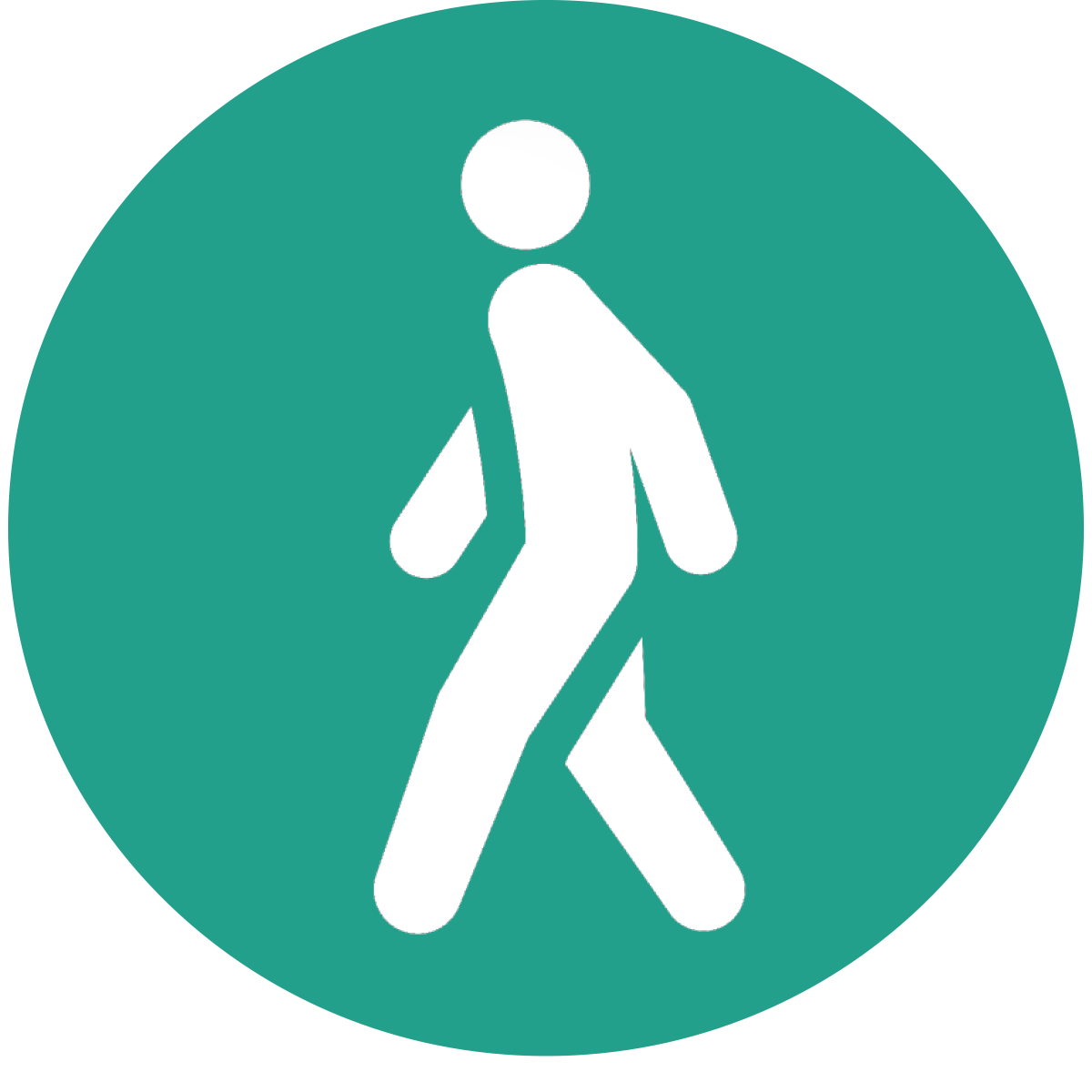Principle 4: Enhance the Campus As A Place For Pedestrians. Circulation, Gathering and Accessibility.
Where possible, vehicular activity (and parking lots) should be limited to the edges of campus so that the heart of campus is pedestrian-oriented and comfortable, and vehicular-pedestrian conflicts are limited. Raised pedestrian crosswalks at key pedestrian and vehicular conflict zones and limiting the heights of adjacent plants would further contribute to a safe campus. Though trees and shrubs should be planted around the perimeter of a parking lot to soften the visual impact, shrubs should be low so that sightlines in and out of the parking lot are maintained.
 Principle 4
Principle 4